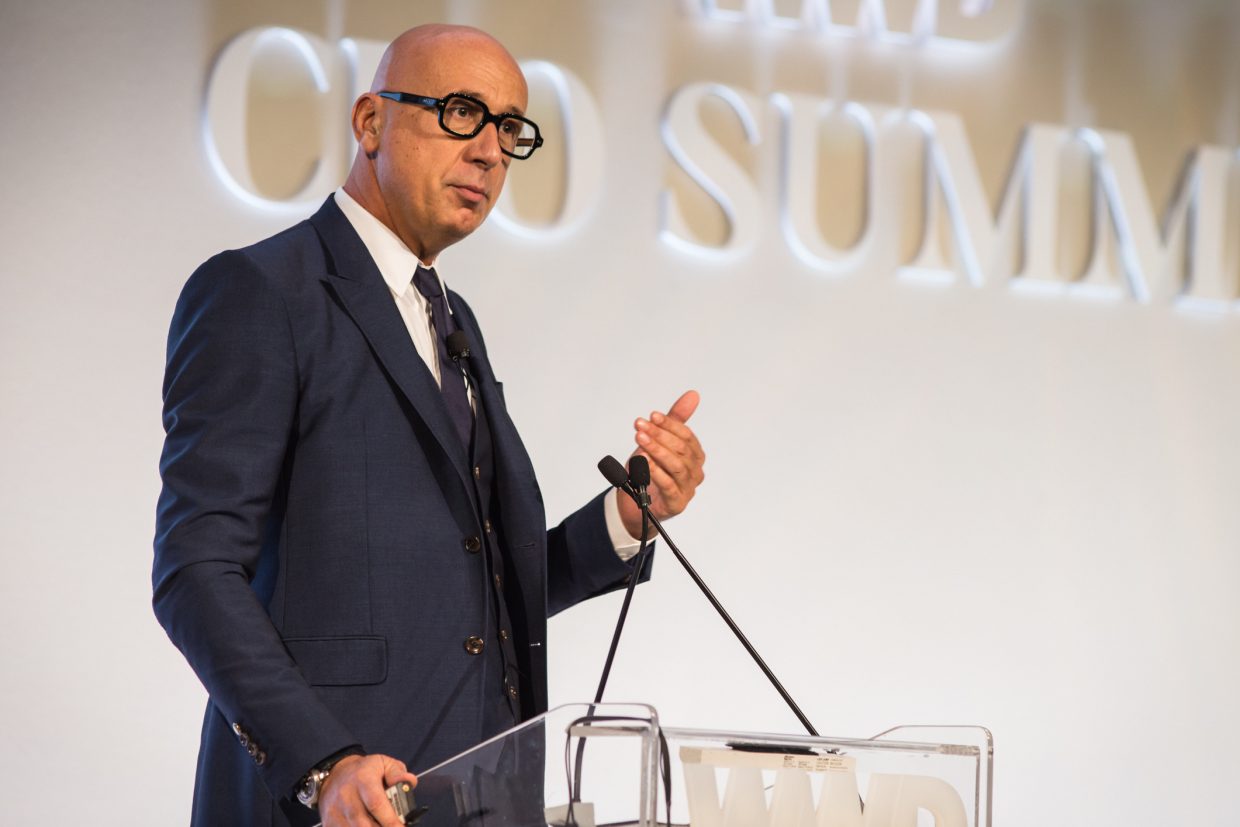Gucci CEO Marco Bizzarri on Why Consumers Are “Feeling Gucci”
Gucci's CEO Marco Bizzarri at the WWD CEO Summit. Photo Credit: Patrick MacLeod/WWD
Gucci’s strong momentum has continued entering the second half of this year. The Italian heritage brand delivered another spectacular earnings result earlier this week, reporting a 49% jump in sales in the third quarter. The Asia-Pacific region sales, led by China, increased 36%.
This higher-than-expected growth proves the continuous influence of the brand’s creative director Alessandro Michele in dictating the fashion taste of global consumers. Michele, who has helmed the house since 2015, is the hero behind Gucci’s latest turnaround.
In China, Gucci is leading the way in profiting from the recovery of the country’s luxury market in recent years. The bold and imaginative design has impressed and won over the hearts of Chinese millennial consumers. Aside from the impressive sales figure, younger generations’ high interest in the brand’s new product lines such as home decor, furniture and perfume, along with the constantly organic promotion by a slew of top-tier online influencers including celebrities Liu Wen and Yang Mi, and fashion bloggers gogoboi and Becky Li, are all signs of Gucci’s success with this demographic.
There are still some who question the sustainability of Gucci’s growth, however. Some fashion critics and industry observers hold the view that Gucci may soon lose steam if it cannot catch up with the fast-evolving appetite of Chinese young customers, who are known to be one of the most demanding and least loyal buyers of luxury brands.
To Gucci’s CEO Marco Bizzarri, who, under his leadership, has put creativity at the core of the brand culture, this pessimism may not hold true. During the WWD’s CEO Summit on October 25, Bizzarri was confident enough to say that almost every consumer on the planet (no matter the age and nationality) is “Feeling Gucci”.
“Feel Gucci” is a term coined and defined by Bizzarri’s 16-year-old daughter, meaning, “feel good”. The term reflects the authenticity and the sincerity of the work of Alessandro Michele. Bizzarri further explained that the brand culture that he instilled, which now values creativity, instinct, and intuition, has made him firmly believe consumers’ enthusiasm that Gucci could continue strong.
“Creativity was put again at the center of Gucci,” he said. “[And] respect, happiness, passion, empowerment, inclusivity are values that foster creativity.”
Upon his arrival at Gucci in 2015, Bizzarri revolutionised the office atmosphere through removing all the black-and-white images of the brand’s deceased supporters like Grace Kelly and Jacqueline Kennedy Onassis. The change was meant to make Gucci set apart from its glorious history and bring in fresh ideas, creativity, joy and emotion.
The “Shadow Executive Committee” is another example of how he empowers a bottom-up idea transfer. The unofficial organ is where Bizzarri can listen to the opinions of lower-level employees. He disclosed that “Gucci Places”, the new travel app released in August this year, was the outcome of the committee.
“You need to listen to consumers, but not too much,” said Bizzarri, who acknowledged the significance of customer’s ideas but also the need to set some distance from them in order to avoid their opinions completely dominating the company’s vision.
He believes “intuition and instinct are ultimately more important than intellect and rationality”. He firmly stated that one of the best professional choices he made — appointing Michele, a person who was not even on the list of candidates for Creative Director — was based entirely on his intuition and instinct.
“[Alessandro] opened the door and was wearing the Princetown fur loafers,” said Bizzarri. “We were thinking the same way — for me, it was from a business standpoint, and for him, design. It was very much about empathy. You feel like you found the right person immediately.”
From Bizzarri’s talk at the Summit, it is clear that his approach to managing this 95-year-old iconic fashion label is to preserve the most human side of luxury culture, which prioritises creativity, instinct, and intuition over rational, strategy, and technology.
In today’s fashion world, the advance of technology and data science has brought assistance as well as distraction to the business. Some high-end brands tend to focus on the modern, superficial metrics such as social media and KOL (influencer) traffic while neglecting the real factor — namely, human creativity, that can differentiate them from rivals among consumers.
By Yiling Pan
This article was originally published on Jing Daily

